Railroad enthusiasts get on board
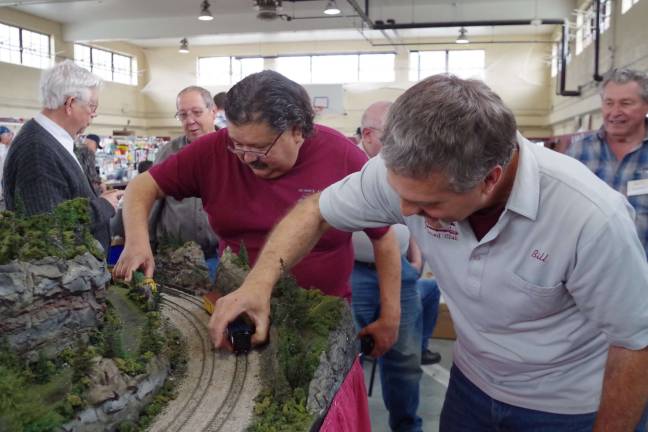
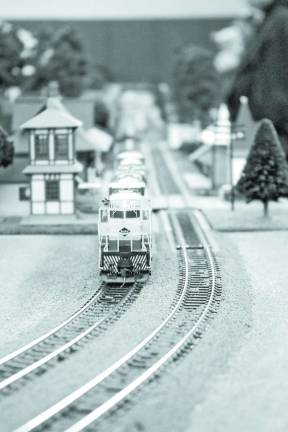
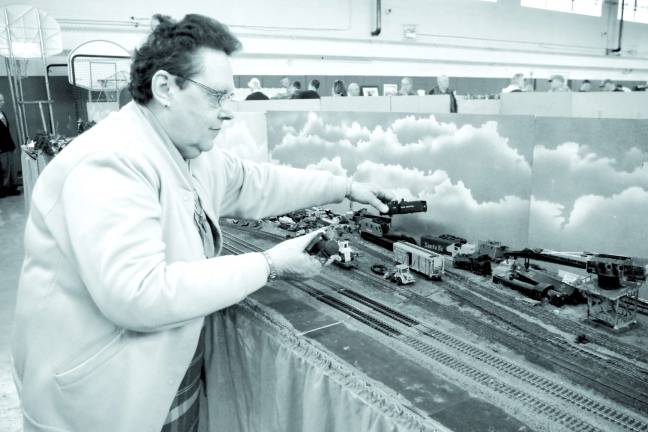
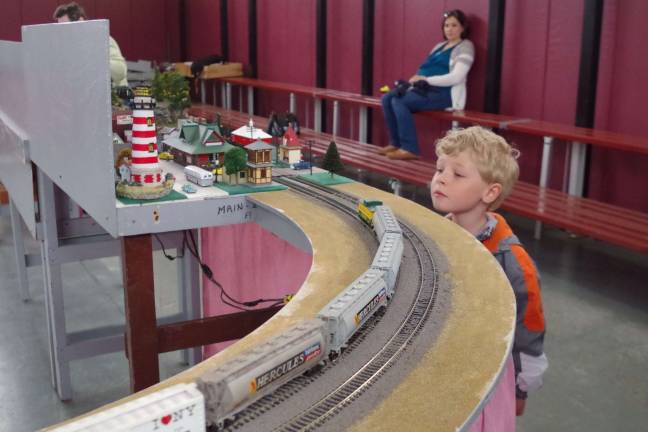
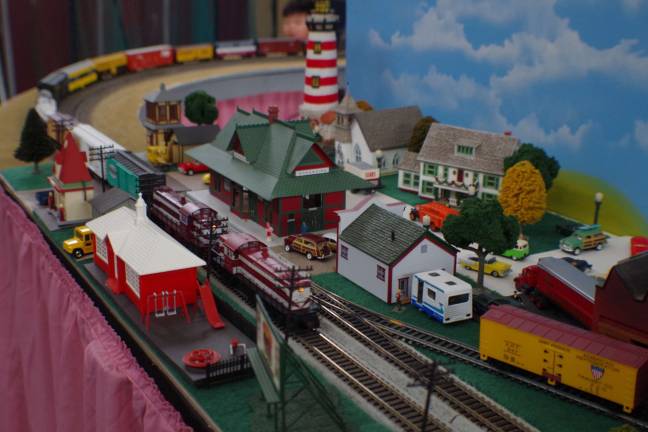
FRANKLIN — Fans of model and prototype railroads were greeted by a room full of vendors and an operating model railroad in the Littell Community Center in Franklin when the Franklin Historical Society and the Sussex County Railroad Club held their annual Model and Toy Train Sale and Show Sunday.
John Bazelewich, president of the Sussex County Railroad Club and vice president of the Franklin Historical Society was pleased with the early turnout. By noon, 182 railroad fans visited the show. The main attraction was the operating model HO railroad at the rear of the large room.
Modular model railroad
The club can set up a large display by linking modules made by club members.
“The heights of the table, the width of the table, where the tracks have to end in relation to the edge of the table, are all National Model Railroad Association specifications,” explained Bazelewich. “All the modules are owned by the individuals with the exception of the yard modules and the connecting module. Those are club property.”
The scenery on each individual module is up to the builder. Modules on display depicted open countryside, mountainous terrain, a junkyard, a drag way, a busy urban scene and areas of Andover, Sparta and Franklin.
While a full-size layout might be too ambitious for a modeler, the small modules can be completed in a reasonable time and without breaking the budget.
“All they have to do is have one small table, 4 feet by 2 feet or 4 feet by 30 inches, whichever they prefer,” Bazelewich said.
Memorabilia
Collectors of prototype railroad memorabilia examined the offerings of Don Dorflinger of Dorflinger Antiques & Collectables. He sells his wares at railroad shows to reach a focused audience.
Dorflinger never knows what will be popular at a particular show.
“At one show you sell a lot of china and silver plate, go to another show and you sell a lot of lanterns, and another show you sell a lot of time tables,” said Dorflinger. “It is always a surprise.”
National security issues have increased his sales in one category.
“We do a lot locks and keys since they are no longer sold online on eBay,” said Dorflinger.
Locks are used to secure track switches, signal equipment and storage facilities.
“There was a concern years ago after 9/11," Dorflinger said. "Homeland Security was worried about people getting a hold of keys to open the locks on the railroads.”
The railroads switched to more tamper-resistant locks.
“These are antique,” said Dorflinger of his offerings. “They are all originals and they are marked for a particular railroad.”
Watching the railroads
Railroad fans that would rather watch trains rather than model them stopped by Dennis Lynn’s table. A distributor of a wide variety of railroad videos, Lynn, of Montague, is the owner of Anchor Videos.
The switch from videotape to the lighter and more compact DVD format has made his job easier.
“I keep about 750 in stock,” said Lynn. “I ship all over the world. Japan, South Africa, Denmark, Australia.”
He takes his collection throughout the Northeastern United States.
"South to Richmond, north to the Canadian border, east to Boston, and west to Pittsburgh,” said Lynn.
The Franklin show cuts his travel time dramatically.
“This is great," Lynn said. "This is 20 miles from home."
County history
Rail fans that prefer the print medium had a large selection of books, magazines and historical society newsletters to choose from.
Wayne McCabe, Sussex County historian, offered a selection of his books covering the county.
“It was an incredibly significant impact that the railroads had when they first came into Sussex County in 1855,” said McCabe.
The first rail line was the Sussex Railroad from Waterloo into Newton.
“Within 10 years of its arrival the town itself more than doubled in terms of its population, its commercial development and its residential development,” said McCabe.
Sussex County goods such as lumber, limestone, milk, butter and farm products could be shipped to other markets and finished merchandise was shipped in.
“Manufactured products such as tables, chairs, beds, and dressers," said McCabe. "All the larger products that had been brought in by horse drawn wagon now came in by rail.”
The railroads could move large volumes of products. The Merriam shoe factory in Newton had its own rail siding.
“They were shipping out hundreds of cases of shoes per day," McCabe said. "It was because of railroads you could ship products in bulk.”